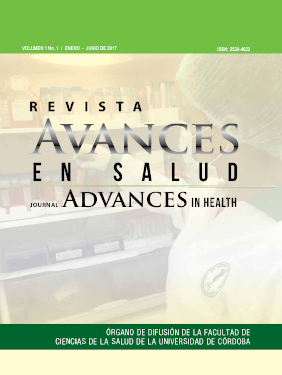Nivel de indicadores de responsabilidad social empresarial (RSE) en la ese hospital local de Montelíbano, 2015.
Nivel de indicadores de responsabilidad social empresarial (RSE) en la ese hospital local de Montelíbano, 2015.
Show authors biography
Objective. To determine the level of corporate social responsibility indicators in order to design a strategic plan for improvement in the Local Hospital ESE Montelibano. Materials and Methods. Quantitative Cross-sectional study, the total population of managers, administrative and operational staff took the survey technique was used with application of the questionnaire as a tool to establish the level of social responsibility of the company from the perception of different interest groups such as: Managers, employees, suppliers and users identified in the sample. Once we collected the information we proceeded to the recording, processing, analysis and discussion in accordance with the objectives and results of other studies using for this purpose the preparation of statistical tables and graphs that illustrated techniques summarized and organized information. Tabulation and graphing was performed using electronic Excel spreadsheet, which allowed to make from simple math, using statistical functions, dynamic tables and graphs. Results. 56% of the population of interest groups officials and users were female, 100%, ages users ranged from 18 to 33 years, and that of officials in the range of 24 to 59 years . In the socioeconomic level found that 89.5% of users belonged to the stratum I, while 8.9% lived in stratum II and only 1.6% of the total respondents belonged to the stratum III, officials it became clear that most were classified in 65% in strata I and II. At a general level and taking into account the assessment of perception indicators in each group, the level of social responsibility of the institution is 3.0, which classified it in an unsatisfactory level. Conclusion. Although the Company shows strengths in areas related to good perception of stakeholders against factors such as promoting teamwork, non- discrimination, women’s employability, respect for the right of settlement and layoffs, ongoing training, mechanisms of knowledge of the expectations of communities, waste minimization through the realization of green audit programs; It has a high level of dissatisfaction with aspects related to the development of its employees and the quality of life of families and above the law benefits, little rise in women to executive positions jobs, lack of schemes of flexible work and programs to stimulate the generation of ideas. Also with the lack of enforcement of environmental certification standards, and detailed information about the destination of its products or services, they do not receive formal statement or goals of environmental principles to prevent pollution, any generation previous incentives and recognition for employees They are suggesting alternatives to contamination processes. At a general level and taking into account the assessment of perception indicators in each group, the level of social responsibility of the institution is 3.0, which classified it in an unsatisfactory level.
Article visits 1008 | PDF visits
Downloads
- Echaide J. Responsabilidad Social Empresaria: un sobrevuelo por la norma ISO 26000. Lan Harremanak. Revista de Relaciones Laborales, (20-21).2011
- Casino Ch, Morales M. Responsabilidad social empresarial: Ed. 2,diciembre de 2008
- Carnegie A. empresario y filántropo estadounidense oriundo de Escocia.
- Vélez Pareja I. Decisiones de inversión para la valoración financiera de proyectos y empresas, 2001, p. 30.
- Córdoba A. El reto de la gestión empresarial. Barcelona: Deusto. Pág. 96. 2005
- Del Empresariado Chihuahuense, F. RSE: Instrumento de autodiagnóstico para las empresas. Ciudad Juárez: FECHAC.
- De Oliveira, M. SA 8000: Modelo ISO 9000 aplicado à responsabilidad social. Qualitymark Editora Ltda. 2003.
- Ministerio Del Trabajo. Programa nacional de equidad laboral con enfoque diferencial de género. 2014
- Alacaraz, R. El emprendedor de éxito. Tercera edición. McGraw Hill. México
- Ministerio Del Trabajo. Decreto 1443. Colombia, 2014
- Cortina A. Construir Confianza. Ética de la empresa en la sociedad de la información y las comunicaciones. Madrid: Editorial Trotta. 226 p.2003
- Anónimo, A. Declaración Universal de los Derechos Humanos. Dialéctica Libertadora, (1), 161-172. 2014.
- Fundación del empresario por la Responsabilidad Social México. Pág. 10
- FUNDEMAS, “La Empresa Amigable con el Medio Ambiente” disponible en: http://www.bibliotecavirtual.info/wp- content/uploads/2013/11/es-manual-del- participante-empresa-medio-ambiente.pdf
- Ministerio del medio ambiente y desarrollo sostenible, programa posconsumo de residuos. Disponible: https://www.minambiente.gov.co/ index.php/component/content/ article?id=28:plantilla-asuntos- ambientales-y-sectorial-y-urbana
- Banco Interamericano del Desarrollo. III Conferencia Interamericana sobre R.S.E. La Responsabilidad Social de las Empresas. Santiago de Chile. 2005. pág. 4. En: www. cruzroja.org/od/redcamp/eventos







